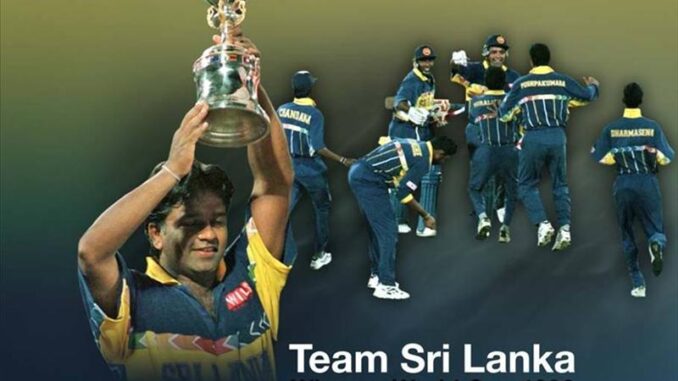
Introduction
As Sri Lanka marks 25 years since winning the Cricket World Cup in 1996, we are in the view that analysing the team formation process of the wining team, key aspects which enabled them to become winners and reasons for the subsequent decline in the Sri Lankan Cricket are of paramount importance. In an era where there is a glimpse of hope in the development of Sri Lankan Cricket (SLC), we hope the assessment of the winning formula in a scholarly manner will contribute towards identifying the key focus areas in development of SLC.
Cricket in Sri Lanka (then Ceylon) commenced with the formation of the Colombo Cricket Club in 1832. In 1981 Sri Lanka was awarded the Test Status and recorded the first Test win in 1985 against India. In 1996 Sri Lanka entered the cricket world cup winners list.
The winning team was coached by Dav Whatmore and captained by Arjuna Ranatunga and Sri Lanka won the cup by defeating the well experienced, talented, sports tech-savvy Australian team. Further, at that time, the Australian cricket team was the team that had won the cricket world cup the highest number of times.
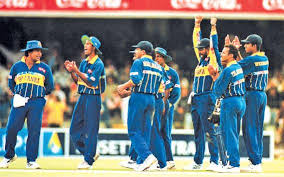
Key managements aspects to learn from the team
Building A Team:
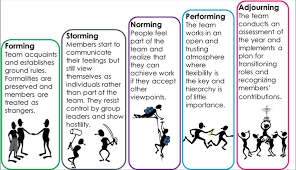
As discussed by (Tuckman,1965) most high performing teams go through a five-stage development process: namely, forming, storming, norming, performing, and adjourning and each stage reflects a unique set of characteristics.
Arjuna Ranatunga started his leadership role as the captain of the Sri Lanka national cricket team in 1988. During the next eleven years he led the team by transforming it from a weak, routinely defeated team into a competitive and successful unit. During that journey, they passed all stages of team formation as discussed by (Tuckman,1965). The Sri Lankan team that faced the world cup series comprised different levels of experiences and capacities. Further, these players brought to the team different backgrounds; representing different parts of the country, belonging to different schools, and trained under different cricket coaches.
Undoubtedly managing these differences was the biggest challenge faced in the team formation stage. As stated by Ranatunga during a TV interview (SL 1996 Cricket World Winning Team, 2021) when developing and selecting 13 memebers as a team, they faced many difficulties due to disagreements and personality clashes between members of the team.
However, the controversy over Muralitharan’s bowling action during a match between Sri Lanka and the West Indies in Brisbane in January 1996, prior to the world cup, helped the team to unite and to start thinking as a team while accepting individual differences. With that they started focusing on winning the upcoming ‘Cricket World Cup’ and reached the performing stage in the team formation process by accomplishing high levels of success during the 1996 World Cup Series.
During the adjourning phase a team debriefs expierinecs gathered during forming, storming, norming, performing stages to move to the next tasks lined up. Following the World Cup win, the Sri Lankan cricket team too followed the adjourning phase where composition of the wining team did not report many changes till 1998 and Ranatunga led the world cup victorious team into the Asia Cup held in 1997, where Sri Lanka won its second Asia Cup ending India’s three consecutive championship run.

Figure 2: : Details of the Team Represented for 1996 World Cup (Source : Wikipedia, the free encyclopedia, 2020)
Aspects of leadership in building a collaborative team for ICC World Cup 1996
As per the research publications on the subject of Cricket, playing conditions are one of the key factors associated with the match outcome to enable the team to formulate match winning strategies (Antony K & Panchapakesan, P. 2013 as cited by Maldeniya & Weerasiri, 2020). Effective decision-making forms an important aspect of the game of cricket (Cotterill, 2014). Cricket is a team sport and that the result of a match depends on team effort and not only on individual performances (Hermanus, H. 2008 as cited by Maldeniya & Weerasiri, 2020).
In addition to Ranatunga’s leadership, the key aspects have helped them in developing a collaborative team to win the cricket world cup in 1996 is as follows:
Gradual development process: During an interview the Sri Lankan Captain stated, “We didn’t take the lift to the 15th floor. We came up slowly and that’s good. It is hard to pinpoint an exact beginning of this team’s journey, but June 1995 is a fair date” (Brijnath & Thawfeeq, 1999). This showcase that the winning team formed years back and during the period they have passed the initial stages in team building according to the Tuckman’s model. In line with that, the leadership style also has changed and captain’s involvement in selecting the team was high.
Team focus towards wining: In a cricket team all the eleven players need to play as one to win the game. There could be existence of individual brilliances but maintaining the team spirit is the key reason for winning. Since 1990, prior to World Cup, only seven times had Sri Lanka scored more than 250 against a top team and won. Further, before winning the World Cup in 1996, Sri Lankan team was in the semi-professional category (Maldeniya & Weerasiri, 2020). Despite the lack of experience in international cricket, the team gradually improved their performances purely due to the team focus towards winning.
Capitalize on strengths: A great team demonstrates their strengths while cleverly covering their weak areas. The well-structured batting order of the Sri Lankan team was designed by analysing the talents of each individual and avoided frequent changes in the structure. Asanka Gurusingha, a member of the wining team stated that “my job was very clear. Arjuna (captain) asked me to bat through the innings.” Jayasuriya had the team’s blessing to attack in the past, but once paired with Kaluwitharana, attack became his mandate. Mahanama was to turn the strike over to the swashbucklers, failing which he and Tillakaratne had to rebuild. Arjuna saved for himself the role of seeing the thing through. Pramodya was there to make the new ball old” (Fernando, 2015). Clear role definitions helped the leader to get best of the team performances by overcoming the limitations.
Support for risk taking and change: Novel concepts and plans always help achieve success. In place of innovation, the coach helped the team to dominate their performances throughout the series. The team played with a fearless brand of cricket by going against most of field restrictions in the first 15 overs.
Winning team members trust: The leader of the team believed in and trusted his fellow men and vice-versa and at the same time has largely contributed towards motivating and boosting the morale of the team players to deliver their maximum potential towards the team’s success. The finest example one could quote in this regard is the conduct of the Sri Lankan captain during the allegation by Australian umpires claiming that Muralitharan was “Chucking” the ball. This happened six weeks prior to the world cup series and Sri Lankan captain stood by his team despite the pressure he faced from other connected stake holders.
Clear communication: On the field and off the field communication among players of the Sri Lankan team is a frequent experience for spectators. During an interview with a journalist of India Today newspaper, Ranatunga stated “Team meetings, often stretching to an hour and a half – and in Sinhalese with an interpreter for Whatmore – would be an exhaustive interplay of ideas. We would put the ideas into a basket and then draw out Plan A, Plan B and Plan C.”
Further, Whatmore’s meeting notes were shared with the team providing effective communication among the team; A few of the meeting notes (Brijnath & Thawfeeq, 1999);
“Today’s match depends upon the ability to remain relaxed and focused, to stay in control. I’m sure you will recall unpleasant examples of tightness in body/mind. It really makes for performing a skill, hard work. Particularly today, when there are 100,000 screaming fans you will need to be in control”.
(a note written by the coach prior to the Semi-finals in India)
Why they fail to continue their winning story
Ranatunga led the world cup victorious team into the Asia Cup held in 1997, where Sri Lanka won its second Asia Cup ending India’s three consecutive championship run. The performance of each player remained unchanged where the “Master Blaster” Sanath Jayasooriya continued his performances by recording centuries. However, after 1998 the Sri Lanka team showcased a decline in their performances. This was highlighted in the 1999 Cricket World Cup where the Sri Lanka team failed to enter semi-finals despite Ranatunga leading the team again with a few of the members from the 1996 World Cup winning team. Therefore, assessing reasons for the decline in performances is vital.
As presented by (Harvey, Millett, & Smith , 1998), developing a successful team supported by clear goals, decision making authority, accountability and responsibility, effective leadership, training and development, resources, organizational support and rewards, is essential for a team’s success. Accordingly, the absence of these factors contributes towards developing unsuccessful teams.
As per the author, the following factors contributed towards declined performances in Sri Lankan Cricket team:
Lack of organizational support and weak decision-making authority: Poor governance driven with the outdated constitution of the SLC contributed towards the poor management of SLC (The Times of India, 2021). Also, political intervention on the Sri Lanka Cricket board diluted their commitment towards developing SLC (Jayasingha, 2019). The absence of clear and transparent administrative function eventually leads towards creating an environment of less trust and weak relationships among members of the team ultimately impacting the team performance.
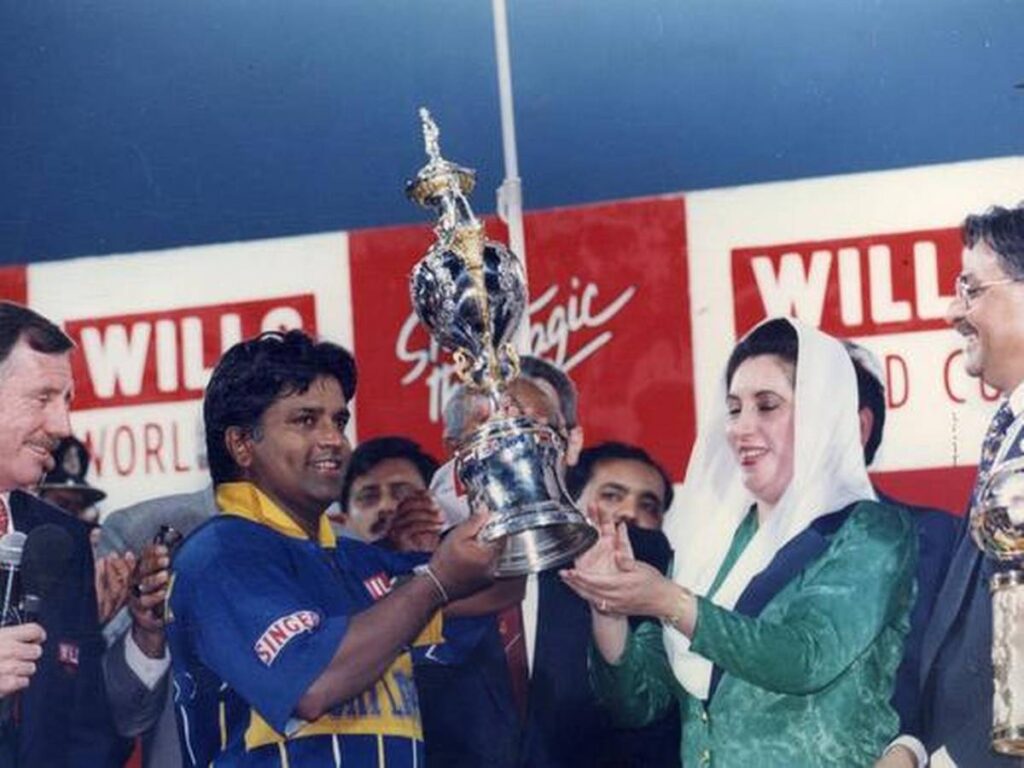
Absence of effective leadership: As per the information published in (Sri Lanka Cricket, 2017) during the 20 year period (1996- 2017) 15 captains have led the Sri Lanka National Team and it is evident that regular changes ocured in the leadership except in instances where Sanath Jayasuriya, Marwan Attapattu, Mahela Jayawardena and Anjelo Mathews led the team. Other captians led the team in a lessor number of matches. However, Arjuna Ranatunaga led the team since 1988 enabling him to build his winning team by continuously working with the team for 08 years prior to the 1996 world cup. In the event of regular changes in the captainship, the team is driven towards lack of accountability and responsibility and weakens the relationship among team members and the leader and ultimately negatively impacts the team performances.
Training and development, resource management: since the world cup win, SLC has changed immeasurably including, improvement in the standard of SLC, regular flow of substantial funding via TV Sponsorships, Shares of Revenue from ICC Tournaments and other sources (Wettimuny & Jayawardena, 2016). Further, the Team turned professional from a semi professional status. However, whether the SLC board has effectively managed their resosurces in developing SLC with a clear long term vision and whether resources have been allocated for developing the next level of the crcicket, is debatable. Non availability of a National Cricket Academy is a clear evidence of lack of training and development iniatives in the SLC.
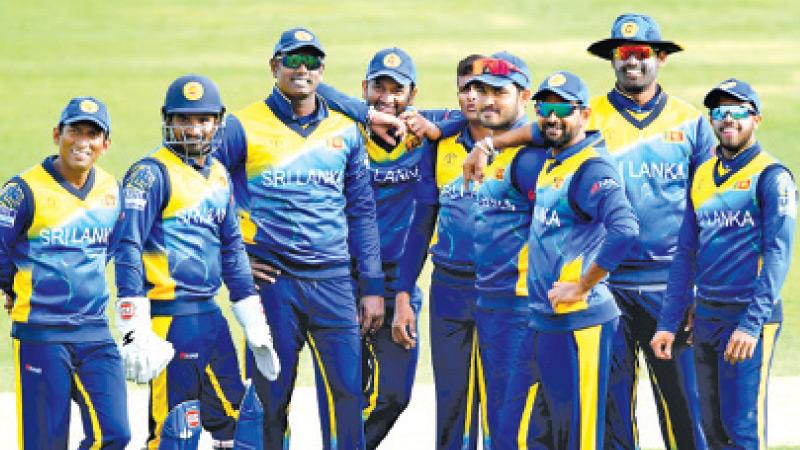
Non availability of clear long-term goals: A goal should also state the ends, rather than the means. This gives teams the freedom to work out how best to achieve the goal (Carr ,1992 as cited by Harvey, Millett, & Smith , 1998). Accordingly, the performance of the SLC team with clear long-term goals is debatable. Retirement of players is a natural event that takes place in every team. However, in line with the retirement of veteran players, we failed to replace the team with quality players to ensure long term succeed in the SLC. Further, regular interpersonal conflicts amongst team members via social media platforms give reason to cricket fans to rethink whether the Sri Lankan Cricket Team works for a clear team goal or for individual personal agendas.

This article is a re production of a research publication of KandK Associates . This publication is based on the published information and research articles in the captioned area. The perspectives, opinions, and commentary presented in this article is purely the view of KandK Associates. They do not purport to reflect the opinions or views of any other party who is concerned on the matters discussed in the article.
- 1 REFERENCES
Brijnath, R., & Thawfeeq, S. (1999, November 30). Sri Lanka’s passage to 1996 World Cup triumph. India Today. Retrieved April 20, 2021, from https://www.indiatoday.in/magazine/sports/world-cup-2015/story/19960415-1996-cricket-world-cup-sri-lankans-trained-meticulously-833129-1999-11-30
Cotterill, S. (2014, July). Developing Decision-Making for Performance: A Framework to Guide Applied Practice in Cricket. Journal of Sport Psychology in Action, 05(02), 88-101. Retrieved April 20, 2021, from https://www.researchgate.net/publication/264532706_Developing_Decision-Making_for_Performance_A_Framework_to_Guide_Applied_Practice_in_Cricket
Fernando, A. F. (2015, MArch). The lion’s fairy tale. The Cricket Monthly From ESPN crickinfo. Retrieved April 20, 2021, from https://www.thecricketmonthly.com/story/834255/andrew-fidel-fernando–sri-lanka-s-fairy-tale-story-of-1996
Harvey, S., Millett, B., & Smith , D. (1998). Developing Successful Teamsin Organization. Australian Journal of Management & Organisational Behaviour, 01(01), 1-8. Retrieved April 23, 2021, from https://core.ac.uk/download/pdf/18421565.pdf
Jayasingha, S. (2019, June 18). Our Cricket Board simply cannot deliver – why not they all quit honourably? Daily FT. Retrieved April 23, 2021, from http://www.ft.lk/Columnists/Our-Cricket-Board-simply-cannot-deliver-why-not-they-all-quit-honourably/4-680175
Maldeniya, D., & Weerasiri, S. (2020). Players’ Performance of a Team Game A Conceptual Review with Special Reference to Sri Lanka Cricket. Conference: International Conference of Business & Information – ( ICBI 2019). Colombo: University of Kelaniya, Sri Lanka. Retrieved April 20, 2021, from https://www.researchgate.net/publication/339446518_Players’_Performance_of_a_Team_Game_A_Conceptual_Review_with_Special_Reference_to_Sri_Lanka_Cricket/link/5e5375a8a6fdcc2f8f5d7a26/download
Mcewan, D., & Beauchamp, M. (2014, January). Teamwork in sport: a theoretical and integrative review. International Review of Sport and Exercise Psychology, 07(01), 229-250. Retrieved April 26, 2021, from https://www.researchgate.net/publication/278182946_Teamwork_in_sport_a_theoretical_and_integrative_review
Net Sollution For Business. (2018, October 15). Tuckman’s Stages of Group Development. Retrieved April 20, 2021, from https://ns4business.com.br/tuckmans-stages-of-group-development/
SL 1996 Cricket World Winning Team, M. o. (2021, March 14). Hitha Illana Tharu. (S. T. Channel, Interviewer) Swarnawahini TV Channel. Colombo. Retrieved March 27, 2021, from https://www.youtube.com/watch?v=kwEc_TNjSS4
Sri Lanka Cricket. (2017). List of Sri Lanka National Cricket Captains. Retrieved April 23, 2021, from List of Sri Lanka National Cricket Captains: List of Sri Lanka National Cricket Captains
Tarricone, P., & Luca, J. (2002). Successful teamwork: A case study. Retrieved April 23, 2021, from http://www.unice.fr/crookall-cours/teams/docs/team%20Successful%20teamwork.pdf
The Times of India. (2021, February 23). Muralitharan among group asking court to reform Sri Lanka Cricket. Retrieved April 23, 2021, from https://timesofindia.indiatimes.com/sports/cricket/news/muralitharan-among-group-asking-court-to-reform-sri-lanka-cricket/articleshow/80928760.cms?utm_source=contentofinterest&utm_medium=text&utm_campaign=cppst
Wettimuny, S., & Jayawardena, P. (2016, July 17). A Strategic Plan to stabilise Sri Lanka’s Cricketing Dispensation. Retrieved April 23, 2021, from Critiquing Cricket: https://cricketique.wordpress.com/2016/07/17/a-strategic-plan-to-stabilise-sri-lankas-cricketing-dispensation/
Wikipedia, the free encyclopedia. (2020, November 18). 1996 Cricket World Cup squads. Retrieved November 27, 2020, from https://en.wikipedia.org/wiki/1996_Cricket_World_Cup_squads
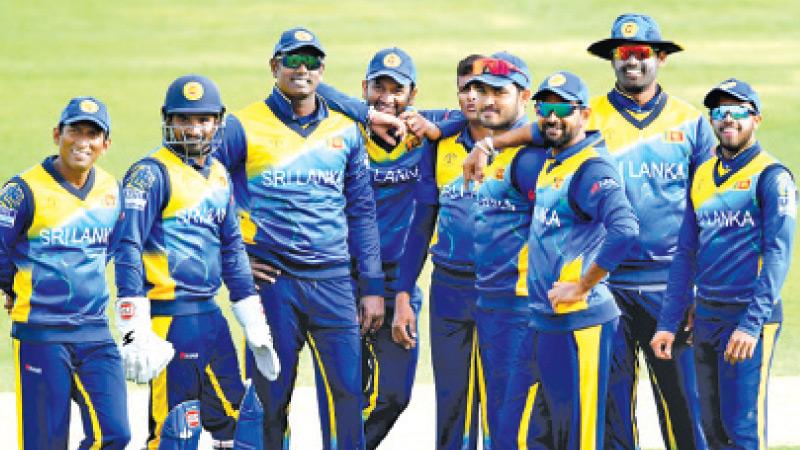

1 Trackback / Pingback